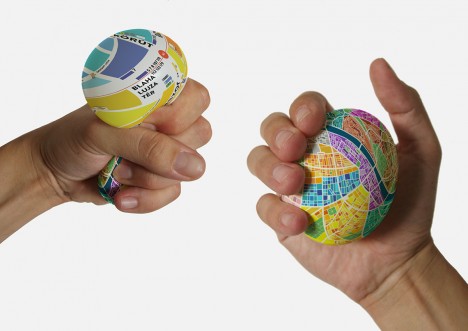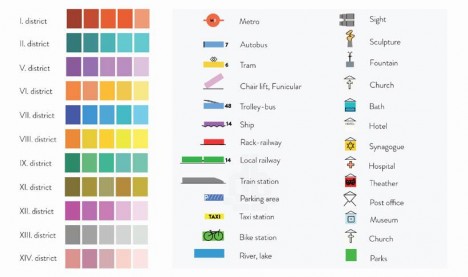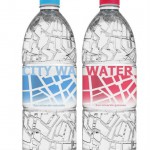Best of CES 2016
CES 2016 just wrapped up in Las Vegas and during the course of the week-long trade show, in between meetings and demos, we had the chance to roam the floor and check out a lot of cool new products; from big releases like the Nikon D500 and D5 to pleasant surprises like the new Kodak Super 8 camera (pictured above). Take a look through our gallery and see for yourself all the cool new stuff CES 2016 had to offer.
Zeiss Optics + ExoLens for iPhone
Zeiss and Fellowes Brands teamed up to launch three new Zeiss-branded iPhone attachment lenses that work with ExoLens iPhone mounts, including a wide-angle, telephoto and macro lens. The wide angle lens offers an 18mm equiv. FOV, the telephoto a 58mm equiv. FOV and the macro a 40-80mm FOV depending on distance from subject. We had the chance to check out the wide-angle and telephoto options in person, and were quite impressed with the quality of these iPhone accessories.
We also chatted with a Zeiss rep on the show floor and he told us that the whole idea in developing these lens attachments was to create something that would not degrade image quality in any way, when affixed to an iPhone. We also joked that these are the most affordable Zeiss lenses on the market (though pricing has not officially been announced). It seems likely that these units will initially hit the market as a kit, which will include the wide, tele and ExoLens mount; the Macro lens will likely be sold as a stand-alone product.
Sony HDR-AS50 Action Camera
The Sony HDR-AS50 is the company’s latest mid-level action camera. It features an 11MP 1/2.4-inch BSI sensor with an F2.8 lens and can capture 1080/60p video as well as 720/120p slow-motion video. While it isn’t waterproof, a newly-designed underwater housing will be available bundled with the camera (and also sold separately).
Unlike GoPros, Sony Action Cameras are stabilized, and the HDR-AS50 utilizes the company’s newest version of SteadyShot. It also features a new button layout and a rearranged menu, with an easy-to-use grid design. It should be available come February and can be yours for $ 200, making it a mean competitor to the GoPro HERO4 Session.
360Fly VR Camera
The 360Fly camera, which was technically launched prior to CES, caught our attention because of its unique design and ease-of-use. We had the chance to briefly demo one on the show floor and were impressed with the fact that users can view their footage in real-time on a smart device, as well as edit and share with great ease.
Video captured with the 360 Fly can also be viewed using standard cardboard VR glasses. And unlike VR cameras that use multiple lenses and stitch in post, the 360Fly has only one lens (so no awkward seams). It is also smaller than most 360 cameras we’ve seen, about the size of a tennis ball. The 360Fly is available now for $ 400.
Olympus M.Zuiko Digital ED 300mm F4 IS Pro
Olympus’ new 300mm F4 IS Pro offers a 600mm equivalent field of view in a reasonably-sized/weighted package. It is weather-sealed, dust-sealed and freeze-proof. It is also the first Olympus Micro Four Thirds lens to offer built-in image stabilization, for easy hand-hold-ability. When paired with an Olympus OM-D E-M1 (firmware version 4.0) or E-M5 Mark II (firmware version 2.0), Olympus claims it will give up to 6 stops of image stabilization.
We had the chance to check out this beautiful lens prior to the show, and found it to be incredibly sharp. Take a look through our sample gallery and see for yourself.
LaCie Porsche Design Desktop Drive
LaCie’s new Porsche Design Desktop Drives utilize USB-C connectivity for file transfer speeds up to 5 Gb/sec. But what’s even cooler about these drives is the fact they can also be used to power your laptop – simply plug the drive into the wall, and USB-C cable from the drive to your computer. Available in 4TB, 5TB and 8TB, these drives will be available in March starting at $ 209.95.
Kodak Super 8
The new Kodak Super 8 camera was easily on of the most talked about product releases of CES 2016 (Nikon DSLRs aside), at least amongst nerdy camera folks. And for good reason: it not only has us feeling nostalgic, it also gives us hope that Kodak, the film company (not the licensed name) is here to stay.
The unit records movies on Kodak Super 8 film cartridges but uses an internal prism to split the image and display what is being captured on an LCD. It also has a built-in microphone and SD card slot for recording audio, which can be synced up later. When available, the Kodak Super 8 camera will ship with either a Ricoh 6mm or 6-48mm lens, both of which are C-Mount.
One of the coolest things about the launch of this new Super 8 camera is that Kodak also announced they will start including processing costs in the price of each Super 8 film cartridge. So when you’re done shooting, simply send the cartridge off to Kodak and they’ll send the physical film back, along with digital scans of your movie, which can then add your sound to/edit.
Pricing and availability details are not set in stone, but it looks like the unit will be available in fall 2016 and will cost between $ 400 and $ 750. The film should cost between $ 50 to $ 75 per cartridge, including processing.
MindShift Gear UltraLight Dual 36L
MindShift Gear is a funky little company owned by Think Tank Photo that specializes in bags for adventure-seeking photographers. What makes the new UltraLight Dual 36L so cool is the ability to remove the gear compartment completely from the backpack, and use it as a stand-alone bag. The gear compartment has both a belt loop and shoulder strap for easy transportation when not in the backpack. However, when it is tucked within the bag, gear can easily be accessed via a side zipper.
We love the idea of camera bags that can serve double duty, hauling one’s gear, as well as one’s personal items. Also, as the name might suggest, the UltraLight Dual is one of MindShift Gear’s lightest daypacks, weighing 3.3 lb / 1.5 kg. It can also carry up to a 15″ laptop and includes a rain cover. The UltraLight Dual 36L is available now for $ 200.
Nikon SB-5000
The Nikon SB-5000 was announced at the same time as the flagship Nikon D5 and D500 DSLRs. It is the first Nikon flash to offer built-in radio triggers. Smaller than an SB-910, the SB-5000 has a range of 30 meters and can control up to 6 groups of flashes, or a total of 18 units. It features a redesigned cooling system and can fire 120 continuous shots at 5-second intervals.
The Nikon SB-5000 will be available in March for $ 599.95.
DJI Phantom 3 4K
DJI might be the most recognizable name in consumer drones. The company’s latest release, the Phantom 3 4K offers the same exact video quality as the higher-end Phantom 3 Professional, but for $ 200 cheaper. 4K video is captured at 30 fps with a 60Mbps compression rate.
The main difference between the $ 1000 Phantom 3 4K and $ 1200 Phantom 3 Professional is the operating range. The 4K uses Wi-Fi to stay connected and stream footage while the Professional uses DJI’s LightBridge system, which has a greater range, and can stream higher-res video. Still, it’s nice to see DJI offering quite a few drone options at different price points to meet different budgets. For those looking to invest in their first drone, DJI also offers the Phantom 3 Standard for $ 800, which is capable of 2.7K video and also uses Wi-Fi to stay connected.
Kodak/JK Imaging PixPro SP360
The Kodak PixPro SP360 4K action camera is one of those products that took us by surprise at CES. In general, we were on the lookout for any cool virtual reality or 360 cameras, but Kodak was one of the last names we expected to be attached to such a product. Technically, JK Imaging has licensed the Kodak name for this product, but that is neither here nor there.
The SP360 4K uses a 12MP BSI CMOS sensor and an F2.8 aperture lens; 4K video is captured at 2028 x 2028. It is being touted as the World’s first 4K 360-degree action camera. Though there were some hiccups with the unit during our booth demo, the sample footage from it looks very good. Users can record footage in 10 different modes including a full 360-degree mode, a super-wide 235-degree mode, and a Front mode that gives a more traditional (less distorted) action-cam POV. The SP360 4K is Wi-Fi and NFC enabled for pairing with a device. It is also freeze, dust and shockproof as well as water-resistant, though not waterproof. It ships with dedicated editing software and footage from the SP360 4K is both YouTube and Facebook-compatible.
The camera is being sold in two different kits, as a stand-alone unit for $ 500, and Dual Pro pack that includes both cameras and a mount for $ 900 (pictured above). Check out a sample video here.
Olympus Tough TG-870
Olympus makes some of the best rugged cameras in the business and the TG-870 is the company’s latest Tough Camera release. Slotted right below the flagship TG-4, the TG-970 features an improved GPS with faster synchronization times (compared to its predecessor), and a brighter, higher resolution 920K-dot LCD.
It is waterproof down to 50 feet, shockproof from 7 feet, crushproof up to 220 pounds and freeze proof down to 14 degrees F. Basically, this camera is built to last, making it a solid option for both adventure-seekers, or those needing a kid-friendly family camera.
Other cool features include Live Composite mode, new Nightscape movie and still modes, built-in Wi-Fi and 1080/60p video. Also cool: the LCD flips up 180 degrees and a front-facing shutter release ensures the ability to take epic selfies, no matter how extreme the situation. The Olympus Stylus Tough TG-870 will hit shelves in April for $ 279.99.
Nikon D5
The fact that Nikon ‘pre-announced’ the D5 didn’t make it any less exciting to see it in person and get our hands on it. Taking over the high performance flagship position in Nikon’s lineup from the D4S, the D5 is poised to create its own legacy. The D4S was a beast; the D5 is an even beastier beast.
The D5 is built around a new 20.8MP CMOS sensor and and Nikon’s EXPEED 5 image processor. Key to its high performance is a new 153 point autofocus system which includes 99 cross-type sensors. In addition, the 180,000-pixel RGB metering sensor is double the resolution of the one in the D4S, which should make Nikon’s already good 3D focusing system work even better. Nikon also made a big deal about high ISO performance on this camera: when fully expanded its ISO range reaches into the stratosphere at ISO 3,280,000. You may not want to shoot quite that high to get optimal image quality, but Nikon emphasized that they want users to be able to shoot in dark environments, such as poorly lit sports arenas, without having to use a strobe.
Although the D5 isn’t the type of camera someone is likely to buy as a primary video tool it can capture 4K video footage, though with the caveat that you get a 1.52x crop factor and a 3 minute record limit per shot.
You can read more about the Nikon D5 in our hands-on article from CES.
Nikon D500
Nikon gave its users an unexpected New Year’s gift in the form of the D500 DSLR, the long awaited follow-up to the D300S, which was introduced way back in 2009. Just in case you did a double take, yes… 2009. Though some users inevitably gave up hope along the way the Nikon faithful never did, and they’ve been rewarded with a camera that may have been worth the wait.
Nikon has managed to cram as much of a D5 into a smaller APS-C body as humanly possible. For the most part, they’ve pulled it off with finesse. The D500 gets the same 153-point AF system as its bigger brother, though on the DX sensor it covers almost the entire frame. It uses the same EXPEED 5 image processing engine as the D5 and shoots 10 fps with a 200 shot Raw buffer. Birders are going to love this thing.
At 20.9MP the D500 doesn’t have quite the resolution as the more common 24MP we see on many cameras nowadays, but we’re guessing that most users of this camera are less worried about total resolution than performance. Like its big brother the D500 can also shoot 4K video, though at a 2.3x crop relative to full frame.
One feature we’re really excited to see is ‘Auto AF Fine-Tune’, which is designed to use the live-view image on the sensor to auto-calibrate the phase detect autofocus system for any lens.
You can read more about the Nikon D500 in our hands-on article from CES.
Samsung Gear VR
Virtual reality goggles were everywhere at CES, but none more than Samsung’s Gear VR headset that uses one of the company’s Galaxy smartphones for its display. I sat through a demo in Samsung’s booth in which you ride a virtual roller coaster while sitting in chairs that simulate the ride’s movement and vibration, and I have to admit it was shockingly realistic. It may be obvious to your eyes that you’re looking at a smartphone, but your brain still leaves your stomach behind when the roller coaster drops down some steep track.
The good news for photographers and videographers is that the conversation around VR seems to be changing. Whereas marketers used to just talk about the technical capabilities of headsets (and let’s face it, they still will if you give them a chance) we seem to have reached the point where everyone realizes that VR content will be what drives the market. Riding roller coasters at trade shows is fun, but tools that give individual content creators the ability to create unique VR experiences or immersive films should really open up creative possibilities.
Panono Camera
Speaking of creating VR content, one of the tools we saw at CES that will help you make it is the Panono spherical camera. At less than five inches in diameter, and weighing in at just over a pound, the Panono packs 36 fixed-focus cameras that capture a total of 108MP of image capture capability. You control the camera with a simple smartphone app that uploads the data to Panono’s servers to perform the processor-intensive stitching process.
We had the opportunity to play with the Panono at CES and you can see an example of a shot we took in the Nikon booth. It’s worth noting that the camera couldn’t capture the wide dynamic range of lighting in the convention center – it probably would have been a challenge for many small cameras – but the folks at Panono showed us a soon-to-be-released update that adds HDR to the camera, with fairly nice results.
Nikon KeyMission 360
We were expecting to see a lot of action cameras at CES, but this one caught us by surprise. After wowing us on Tuesday with its new D5 and D500 DSLRs, Nikon unexpectedly gave us the the KeyMission 360.
The company says the name reflects the nature of the camera; when you’re out having a serious adventure your ‘key mission’ is to get footage. OK, we’ll be the first to acknowledge that the name doesn’t exactly roll off your tongue, but the camera itself looks pretty exciting. It’s a shockproof, waterproof, spherical 360-degree action camera which includes electronic VR stabilization and generates 4K (UHD) video using two ultra-wide angle field of view cameras.
Unfortunately, the KeyMission was still locked under glass at CES, but to our eye the footage from the camera looked pretty impressive. We’ll reserve final judgement until we have a chance to run our own tests, but there are already arguments around the office about who gets to do the playing testing. The KeyMission 360 is scheduled to be released in spring 2016.
Ambarella Electronic Image Stabilization (EIS)
Many consumers may not recognize the name Ambarella, but that doesn’t mean they’re not customers. Ambarella makes many of the processors that power the small, mobile imaging devices now in use, such as action and drone cameras. Chances are if you have one of these devices it probably has Ambarella technology inside.
Ambarella showed us a number of new technologies at CES 2016, but the one that really caught our attention was the company’s electronic image stabilization (EIS) technology. Historically, processing power limited just how much manipulation could be done to video in realtime; for example, you could have effective image stabilization on a small drone camera, but only at 1080p. With Ambarella’s newest chips, such as the H2, it’s now possible to record in UHD 4K with fully enabled EIS.
How good is it? To provide an example the company set up two cameras on a vibrating platform, one with EIS enabled and one without, and two TVs showing live feeds from each camera. The results? The image from the camera without EIS enabled was bouncing all over the place, while the camera with EIS enabled looked almost as if it was mounted on a tripod. Ambarella is a component provider to other manufacturers so it will probably take a while before this technology starts appearing in consumer products, though a spokesman said we should be seeing shipping products by CES next year.
Panasonic DMC-ZS100
Readers of the site will know that we’re generally big fans of Panasonic’s high end compact cameras, so the new Panasonic ZS100 (TZ100 outside North America) definitely got our attention. It’s a compact model with a 20MP 1”-type sensor and a 25-250mm equivalent lens. Despite the rather generous 10x zoom range it still collapses down into a package that will fit in many pockets.
But it’s not just the 1” sensor and versatile zoom range we like. The camera features two control dials (one on the top plate and one surrounding the lens), four customizable buttons, and a touch screen, meaning you get plenty of control. Top it off with 4K UHD video and it makes a very nice package.
Of course, there are always tradeoffs with long zooms, and the ZS100 is no exception. Although it starts out at F2.8 at the wide end, it stops down to F5.9 at the long end. If you can work within those parameters, however, the ZS100 could make a great compact travel zoom.
InVisage Quantum Film
 |
| The top two devices in this image are an iPhone and a ‘popular Android phone.’ The bottom device is a prototype phone incorporating InVisage’s QuantumFilm sensor technology. |
A couple months ago we wrote about an innovative sensor technology from InVisage called Quantum Film. You can read our earlier article for specifics on how the technology works, but the abbreviated version is that instead of using silicon as the light sensitive medium in its sensors, InVisage Quantum Film uses a layer of nano-scale crystals that respond to specific frequencies of light. The primary benefits of the technology are expanded dynamic range (compared to silicon-based sensors) and global shutter, which eliminates the jello effect often seen in CMOS sensor designs.
In a private meeting with InVisage we finally had a chance to see these sensors in action, and we’re excited. To show off dynamic range InVisage set up a mini studio scene with color charts in high contrast bright and dark areas (see photo above). Three phones – an iPhone, an ‘popular Android phone,’ and an unreleased phone with an InVisage sensor – were lined up for comparison. To our eye the InVisage sensor definitely captured more dynamic range, appearing a bit similar to Log video footage. We were also able to see global shutter in action in a side-by-side comparison to an iPhone. In this video, you can see the difference global shutter makes when capturing certain types of motion such as a vibrating guitar string.
The good news is that you won’t have to wait long to get your hands on this technology: InVisigen tells us the first phones with their sensors are expected to ship in Q1.
olloclip Studio
Smartphone photography has gone mainstream, and one company that has been supporting users almost from the beginning is olloclip, known for its cases and add-on lenses. At CES 2016 olloclip introduced its new olloclip Studio, an integrated case and accessory solution for the iPhone 6/6 Plus series of phones.
The core of the Studio is a highly protective case that includes a rail-mounting system to which accessories can be attached. Accessories include two screw mounts for attaching tripods or grips, two cold-shoe adapters for add-ons such as microphones or LED lights, a very sturdy finger grip to facilitate one-handed operation, and a kickstand. It’s enough to build out an entire filming rig in the palm of your hand.
Samsung T3 SSD
It’s not exactly photography equipment, but the Samsung T3 portable SSD is an appealing solution for photographers and videographers who need lots of fast, compact storage while working in the field. Available in capacities up to 2TB, the T3 weighs in at under 2 ounces (51 grams, to be exact) and its longest edge is only 3 in / 7.6 cm long – small enough to fit in a shirt pocket. See that connector on the end? That’s a USB type-C connector, giving you an idea of how small it is.
Despite its size, the T3 offers data transfer speeds up to 450MB/sec, likely fast enough for all but the most demanding applications of most photographers.
Articles: Digital Photography Review (dpreview.com)


































































You must be logged in to post a comment.